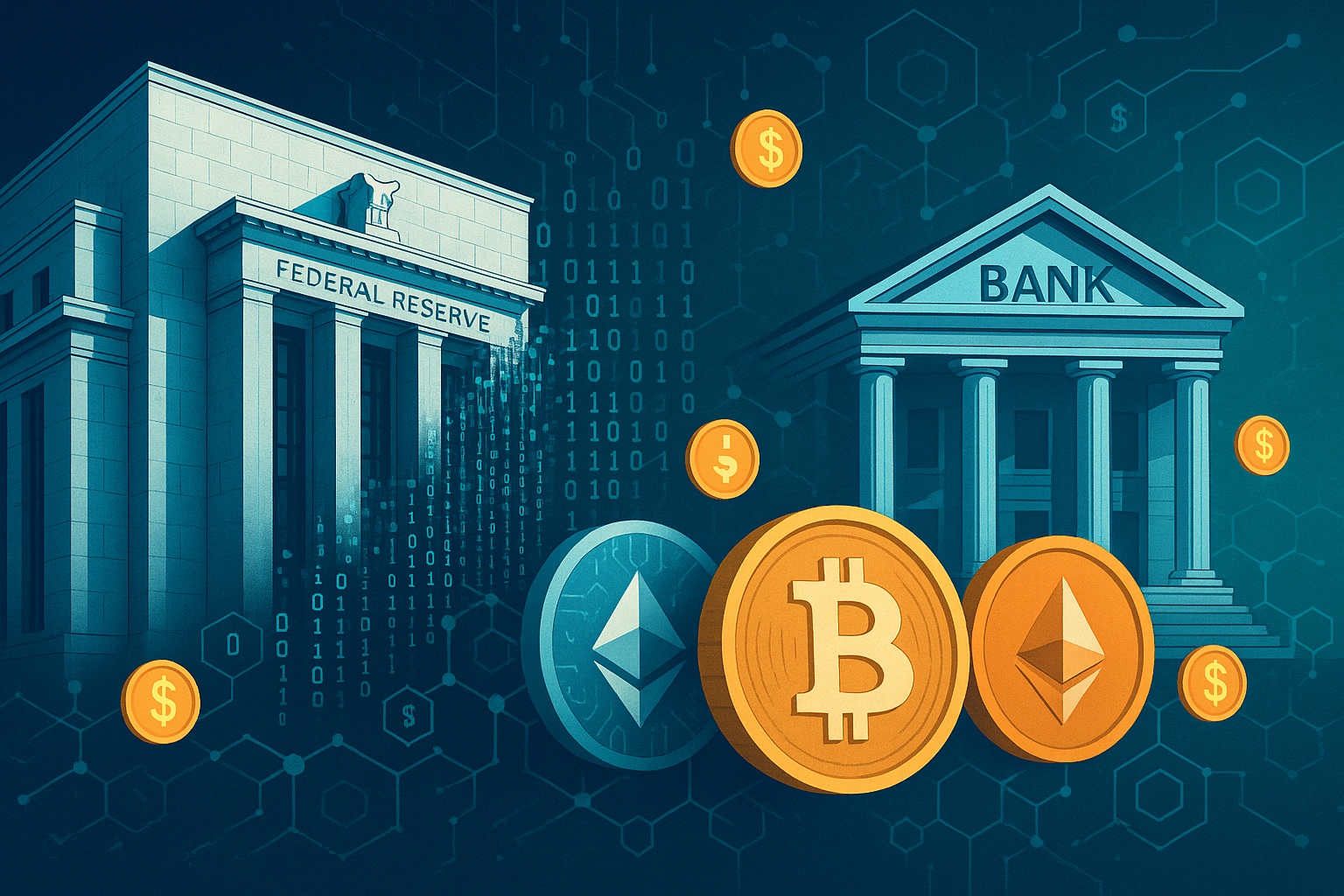At 10:33 PM Pacific today, April 24, 2025, the Federal Reserve quietly made a move that could reshape how banks engage with crypto.
With little fanfare, the Fed withdrew several key pieces of guidance that previously restricted banks from entering the crypto space without permission. This shift could mark the start of a more flexible — and possibly more innovative — era for U.S. banking and digital assets.
Let’s break it down.
In a press release, the Fed announced it would no longer require state member banks to notify regulators before getting involved in crypto-asset or dollar token activities.
Specifically, the Fed has now rescinded the 2022 supervisory letter SR 22-6, which required banks to get advance approval for any crypto activities. You can still view SR 22-6 here, but it’s no longer active.
Also gone is the 2023 guidance on dollar token activities. That rule previously required a “nonobjection process” for stablecoin and tokenized dollar initiatives. The full document is still available for reference here.
To top it off, the Fed is walking away from two joint statements it made with the FDIC and OCC in 2023. Those statements warned banks about the risks of dealing with crypto and the volatility in token-backed liquidity. Now, they’ve been officially withdrawn.
FDIC Echoes the Message: Go Ahead, If You Can Handle It
This isn’t just a solo act by the Fed.
The FDIC also stepped in to clarify that banks can engage in crypto activities without prior approval — as long as they manage the risks. This came through FIL-7-2025, issued on March 28.
This replaces an earlier rule, FIL-16-2022, which required FDIC-supervised banks to get the green light first.
Permissible activities now include:
- Holding crypto assets in custody
- Backing stablecoins
- Issuing digital assets
- Using blockchain for payments
But here’s the catch: banks still need to meet expectations around cybersecurity, liquidity, AML, and consumer protection. So while the barriers are coming down, the guardrails are still up.
Why This Matters: Less Friction, More Innovation
Until now, banks had to tiptoe into crypto — alerting regulators first and waiting for permission.
Now, they can move faster. This shift cuts red tape and could encourage banks to explore crypto services more boldly. Think custody solutions, tokenized deposits, or stablecoin rails — all with less bureaucracy in the way.
Analysts at Cointelegraph and Investing.com both noted this looks like a friendlier regulatory environment under the current administration.
And it’s not just about crypto cheerleading. It’s about aligning rules with how digital assets are evolving.
The banking system needs to keep up — and this might be a way to help it catch up without waiting years for new legislation.
The Bigger Picture: A Shift in Tone, Not a Free Pass
It’s important to understand: the Fed isn’t throwing caution to the wind. Oversight is still in place. It’s just moving into standard supervisory channels instead of creating special hoops for crypto.
The move is about modernizing regulation — not removing it.
This shift also aligns with what firms like Davis Polk predicted in late 2024: that new leadership at banking agencies would likely result in a softer stance toward digital assets.
We’re now seeing that play out in real time.
What Comes Next?
The Fed says it plans to work with other agencies to release more guidance as needed. So, this may just be the first domino to fall.
Here’s what to watch:
- Will banks start offering more crypto services to clients?
- Will stablecoins gain traction in traditional finance?
- Will new products emerge from this newfound flexibility?
One thing’s for sure — regulators aren’t trying to block crypto anymore. They’re starting to make room for it.
Final Thoughts
The Fed’s withdrawal of crypto guidance is a major signal.
It means banks no longer need a hall pass to get involved in digital assets — as long as they follow the rules that already apply.
It also suggests that the U.S. may be ready to compete globally in crypto innovation, especially as other countries build central bank digital currencies and blockchain infrastructure.
Is this the green light crypto has been waiting for?
Maybe not the final one — but it’s definitely a flashing yellow turning green.



